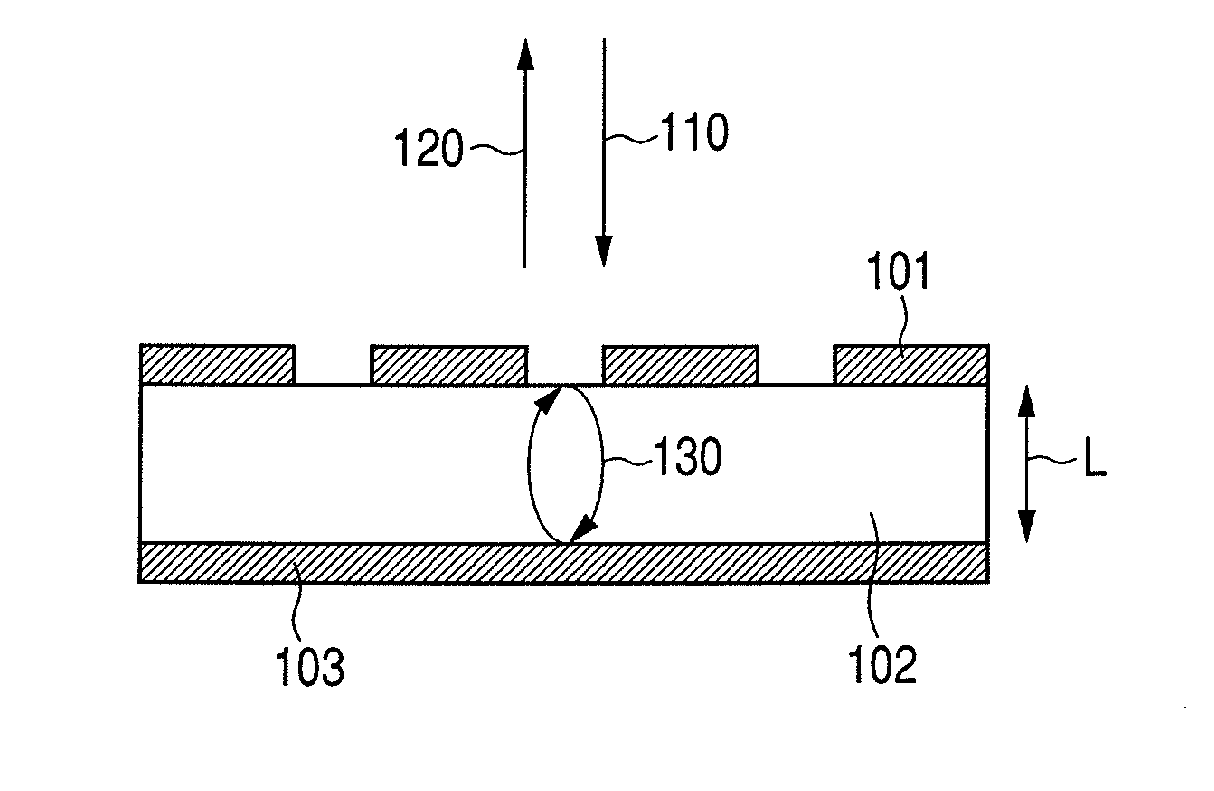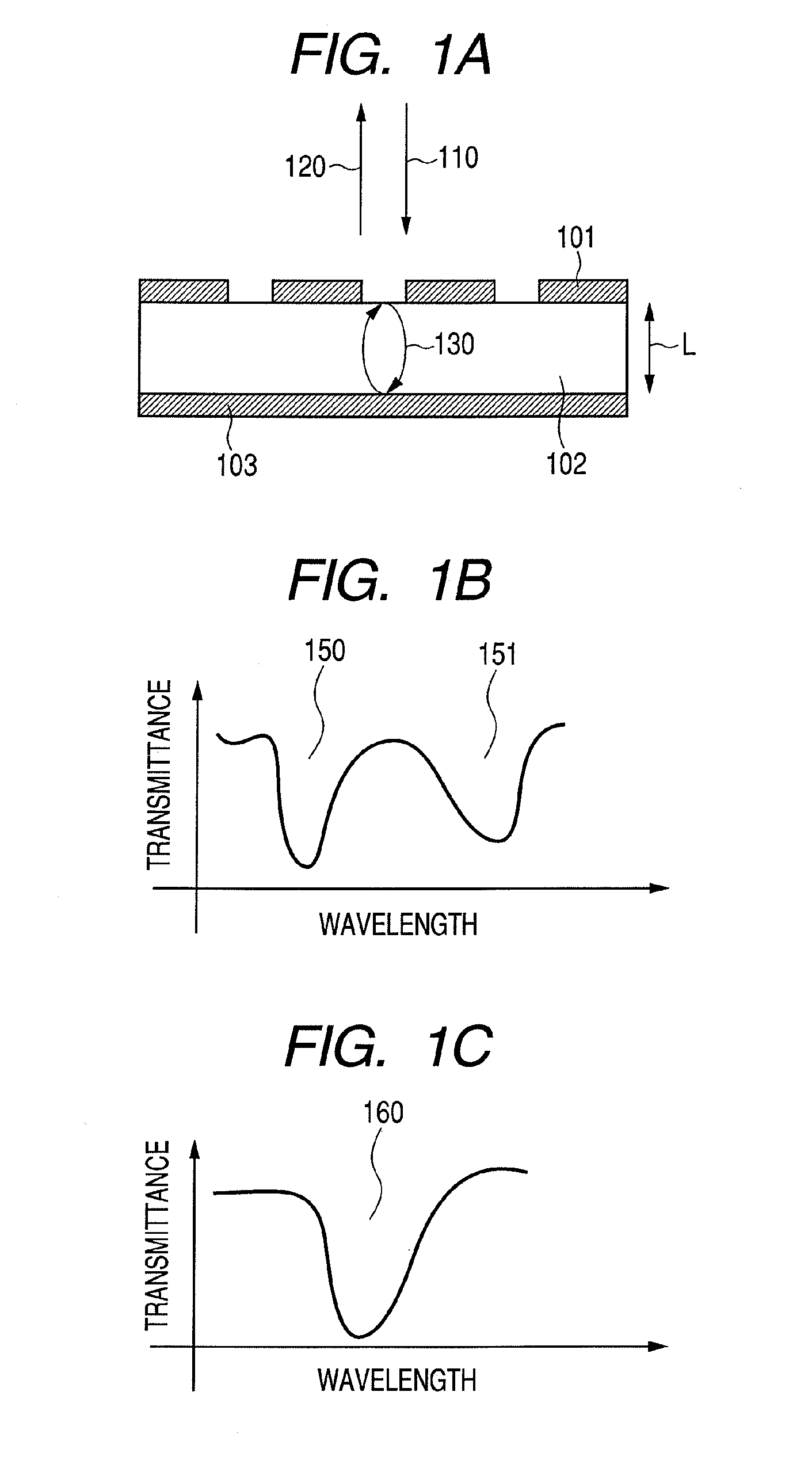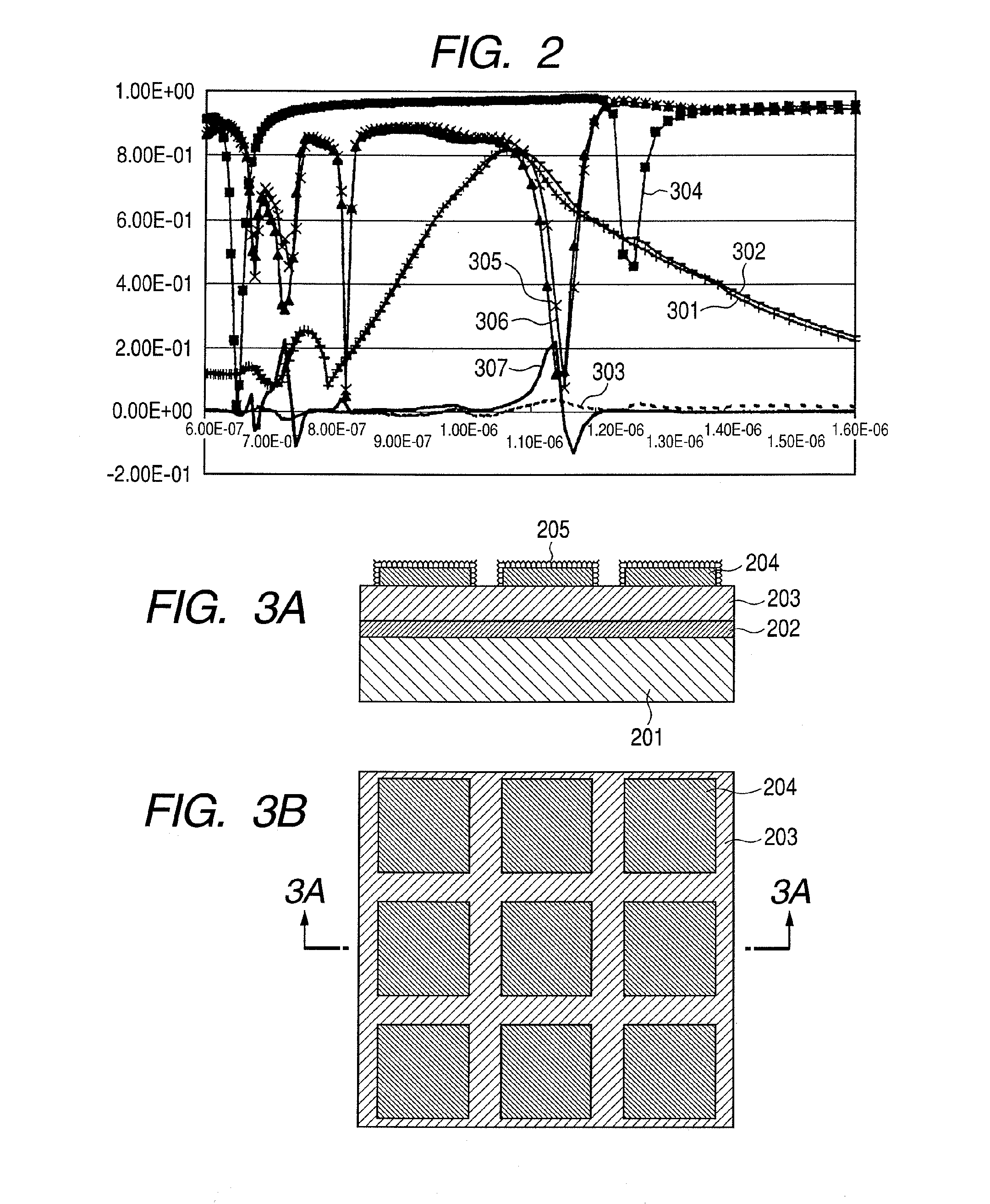Chemical sensor element, sensing apparatus, and sensing method
a sensor element and sensing technology, applied in the field of chemical sensors, can solve the problems and not achieving the effect of the proposed structure, so as to achieve the effect of increasing the shift of the resonance spectrum and reducing the width of the resonance spectrum
- Summary
- Abstract
- Description
- Claims
- Application Information
AI Technical Summary
Benefits of technology
Problems solved by technology
Method used
Image
Examples
example 1
[0087]A sensor of Example 1 of the present invention is described below.
[0088]Firstly, a process for production of the sensor element of the present invention is described. FIGS. 4A-4D illustrate steps of production of the sensor element of this Example.
[0089]A quartz plate is used as the base plate 401, having a thickness of 525 μm. The thickness of quartz base plate 401 is not limited thereto.
[0090]As illustrated in FIG. 4A, a Au thin film is formed, on quartz base plate 401, as metal layer 402 in a thickness of about 100 nm by vapor deposition. The material of metal layer 402 is not limited to Au, but may be any metal which has a high reflectivity in the measurement wavelength range of the sensor element of this Example. Specifically, the material of metal layer 402 includes gold, silver, copper, platinum, and aluminum. The method of film formation is not limited to vapor deposition, but may be sputtering.
[0091]On the formed metal layer 402, a silicon dioxide film is formed as re...
example 2
[0113]A sensor element of Example 2 of the present invention is described below.
[0114]Firstly, a process for producing the sensor element of this Example is described. FIGS. 7A to 7D illustrate the sequence of the steps of production of the sensor element of this Example.
[0115]Quartz base plate 701 is provided, having a thickness of 525 μm. The thickness of quartz base plate 701 is not limited thereto.
[0116]As illustrated in FIG. 7A, on the surface of quartz base plate 701, a Au thin film is formed as metal layer 702 in a thickness of about 100 nm by vapor deposition. The material of metal layer 702 is not limited to Au, but may be any metal which has a high reflectivity in the measurement wavelength range of the sensor element of this Example. Specifically, the material of metal layer 702 includes gold, silver, copper, platinum, and aluminum. The method of formation of metal film 702 is not limited to vapor deposition, but may be sputtering.
[0117]On the formed metal layer 702, a si...
PUM
| Property | Measurement | Unit |
|---|---|---|
| resonance wavelength | aaaaa | aaaaa |
| thickness | aaaaa | aaaaa |
| surface plasmon resonance wavelength | aaaaa | aaaaa |
Abstract
Description
Claims
Application Information
 Login to View More
Login to View More - R&D
- Intellectual Property
- Life Sciences
- Materials
- Tech Scout
- Unparalleled Data Quality
- Higher Quality Content
- 60% Fewer Hallucinations
Browse by: Latest US Patents, China's latest patents, Technical Efficacy Thesaurus, Application Domain, Technology Topic, Popular Technical Reports.
© 2025 PatSnap. All rights reserved.Legal|Privacy policy|Modern Slavery Act Transparency Statement|Sitemap|About US| Contact US: help@patsnap.com



